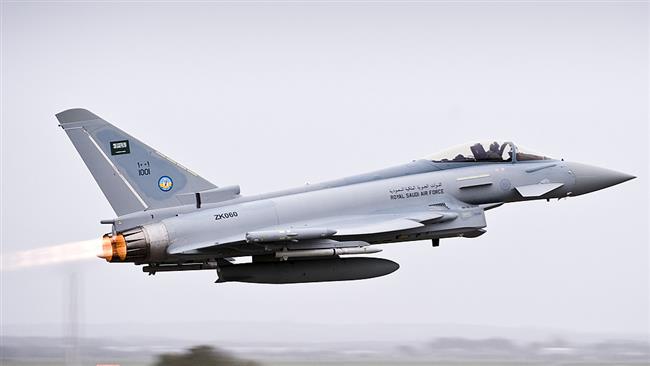UK activists arrested for attempting to disarm Saudi warplanes


UK Police have arrested two activists who attempted to disarm advanced warplanes that were headed to Saudi Arabia.
The activists had entered one of the sites of BAE Systems, a British arms manufacturer, in Warton before being detained on Sunday morning, Lancashire police said.
The arrest followed an incident at the BAE systems site, police added, without releasing more details.
A BAE spokesman said the company was investigating the incident in coordination with law enforcement.
Identifying themselves in a statement as Reverend Dan Woodhouse and Quaker activist Sam Walton, the activists confirmed their charges, saying they sought to prevent the warplanes from being used in Saudi Arabia’s war against Yemen.
“A Saudi-led coalition has been carrying out devastating airstrikes in Yemen since 2015, and international human rights organizations have condemned the bombings,” the statement read.
“Stopping or even delaying Saudi Arabia having more plans with which to bomb Yemen would save innocent lives and prevent war crimes,” said Woodhouse, a Methodist minister from Leeds.
Since the beginning of the Riyadh regime’s unprovoked aggression, almost 10,000 Yemeni people, including over 2,000 children, have been killed.
London, which has been one of the biggest suppliers of weapons to Riyadh for 40 years, has provided Tornado and Eurofighter Typhoon jets along with training to Saudi pilots.
London has also admitted to exporting 500 illegal cluster bombs to Saudi Arabia in the 1980s which the country used in its war on Yemen.
In November, the UK rejected calls by two parliamentary committees and human rights groups to stop selling arms to Saudi Arabia.
Last year, British anti-arms trade campaigners led a successful legal attempt to prevent the government from giving weapons to Saudi Arabia over the Yemen war.
The UK High Court is expected to make a ruling next month on whether arms deals with the Saudi regime breach London’s weapons export laws.







